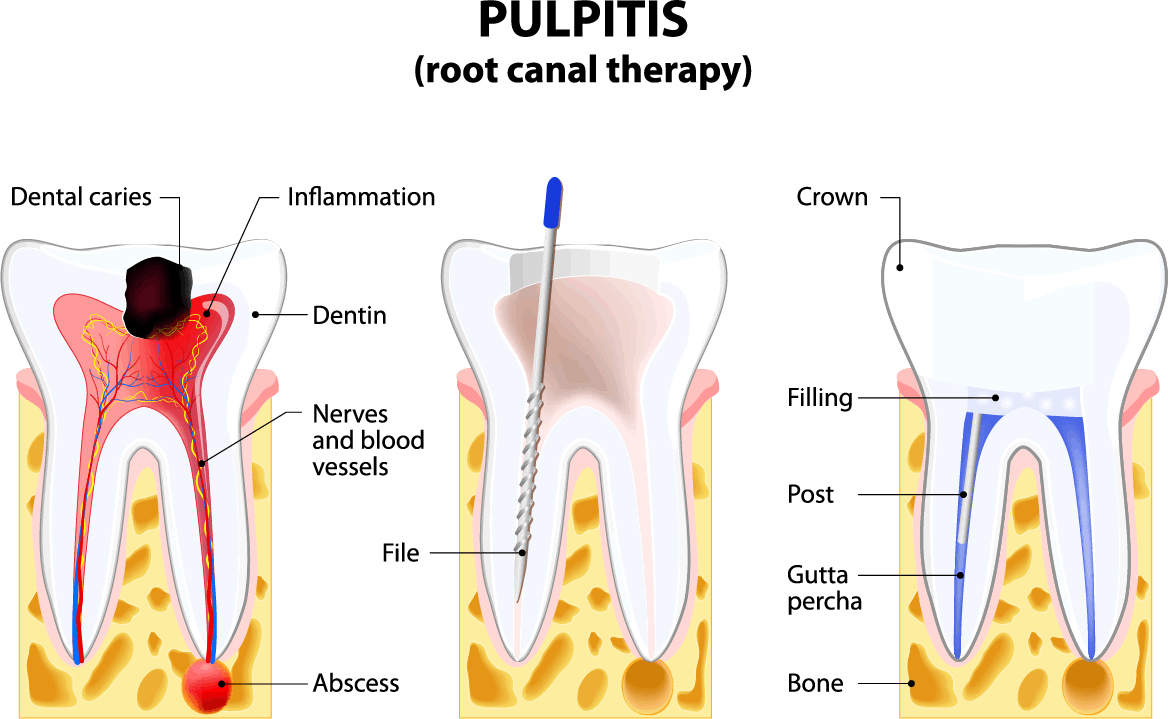Root Canal Treatment In South Vancouver
Helpful Links
Learn About Fraserview Dentist
On This Page
Common Questions
Contact Us
Is Root Canal Treatment Common?
Has your dentist told you that you need a root canal? If so, you’re not alone. The root canal is the most common treatment used to save teeth that are badly decayed or infected. In fact, millions of people receive them each year.
Despite how common root canals are, many patients fear the procedure because they think it will be painful or lead to ongoing dental issues in the future. Here at Fraserview Dentist, we hope to put those fears to rest.
Talk to Fraserview Dentist about any concerns you have surrounding your root canal procedure. We’ll gladly walk you through the process and help put your mind at ease. Contact us today!
What Makes Fraserview Dentist So Great?
With benefits like financing options, and evening and weekend hours, we're here to accommodate you! Find out why we are so highly rated in our reviews. Call Now (604) 325-1711Book An AppointmentWhat Is a Root Canal?
Dentists and endodontists prescribe root canal procedures to treat damaged or diseased teeth and relieve pain. To understand what occurs during a root canal, you’ll need a bit of a tooth anatomy lesson.
A tooth is made up of white enamel with a hard layer underneath called dentin. Dentin is a hard tissue with microscopic tubes, which means that whenever the outer enamel is damaged, cold or heat can penetrate the dentin layer and cause pain.
Beneath the dentin layer is the pulp, a soft, living structure that features nerves, blood vessels, and connective tissues. If the pulp breaks down or is damaged, the tooth can become abscessed or infected. Although the pulp helps a tooth grow during its development, the pulp is no longer necessary once the tooth is fully developed.
During a root canal, this pulp is removed, and the dentist cleans and seals the inside of the tooth.
Knowing When You Need a Root Canal
One of the biggest reasons why dentists recommend root canals is to treat or help a patient avoid an abscessed tooth. An abscess occurs when a pus-filled pocket forms at the bottom of the tooth’s root. Infections that lead to abscesses can occur from a crack in the tooth, a deep cavity, or gum disease.
Patients may also need a root canal to treat the following:
Bone loss around the tooth’s root
Drainage issues into the gums or cheek
Swelling that can spread to the neck, head, or face
The following signs often indicate that root canal therapy may be your best option:
Tooth discolouration or darkening
Gum tenderness or swelling
Severe toothache pain
Prolonged sensitivity to heat or cold
Recurring or persistent gum pimples
In some cases, however, you may not experience any of these symptoms.
An Overview of the Root Canal Procedure
Your Fraserview dentist or endodontist can usually complete your root canal in one or two visits. First, the dentist takes an X-ray of your teeth to determine if there are any signs of infection around the suspicious tooth. Once they determine a root canal is necessary, your dentist will use local anesthesia to numb the area and put you at ease. You may also want to discuss dental sedation if necessary.
After placing a rubber dam around the tooth, the dentist drills a hole into the tooth. He or she then removes the pulp along with any related debris and bacteria through the access hole. At that point, they clean out the tooth using a series of files, working the full length of the tooth until everything is scraped out and clean.
Once the tooth has been cleaned, the dentist seals it. In some cases, your dentist may want you to come back at least a week later before sealing the tooth, but some choose to perform the sealing the same day as the root canal. Whether you need to wait depends on the state of the tooth. For example, if the dentist anticipates a chance of infection, they may put medication inside the tooth along with a temporary filling and wait until it clears up.
During the second part of the process, the dentist uses a sealer paste and rubber compound to seal the area from which the pulp has been scraped. Finally, a filling is placed over the access hole, and you’re good to go.
Following a root canal, you may need additional dental work to restore the tooth to full health, such as a crown or other restoration method. These procedures will occur at a later date.
What to Expect After a Root Canal Treatment at a ‘Dentist Near Me’
Many patients need root canals to eliminate pain, so you should feel much better after having the procedure. If your dentist opts to perform the root canal in two or more visits, keep in mind that you should minimize chewing until the permanent filling or crown is placed. The last thing you want to do is re-contaminate the inside of your tooth.
The tooth may remain sensitive for a few days after the procedure, which is normal. Aside from having to take an over-the-counter pain medicine, most patients can resume their normal activities the following day.





